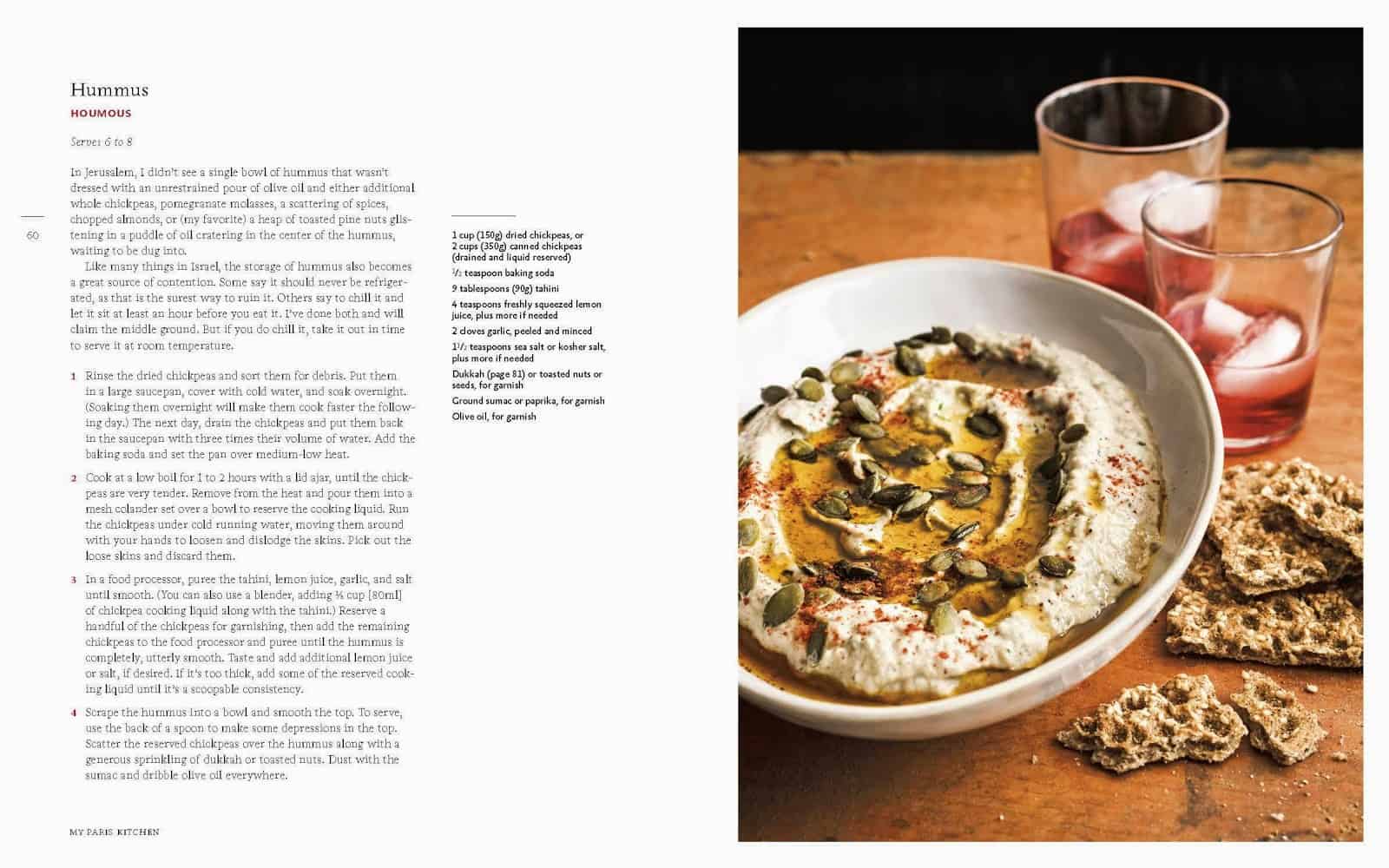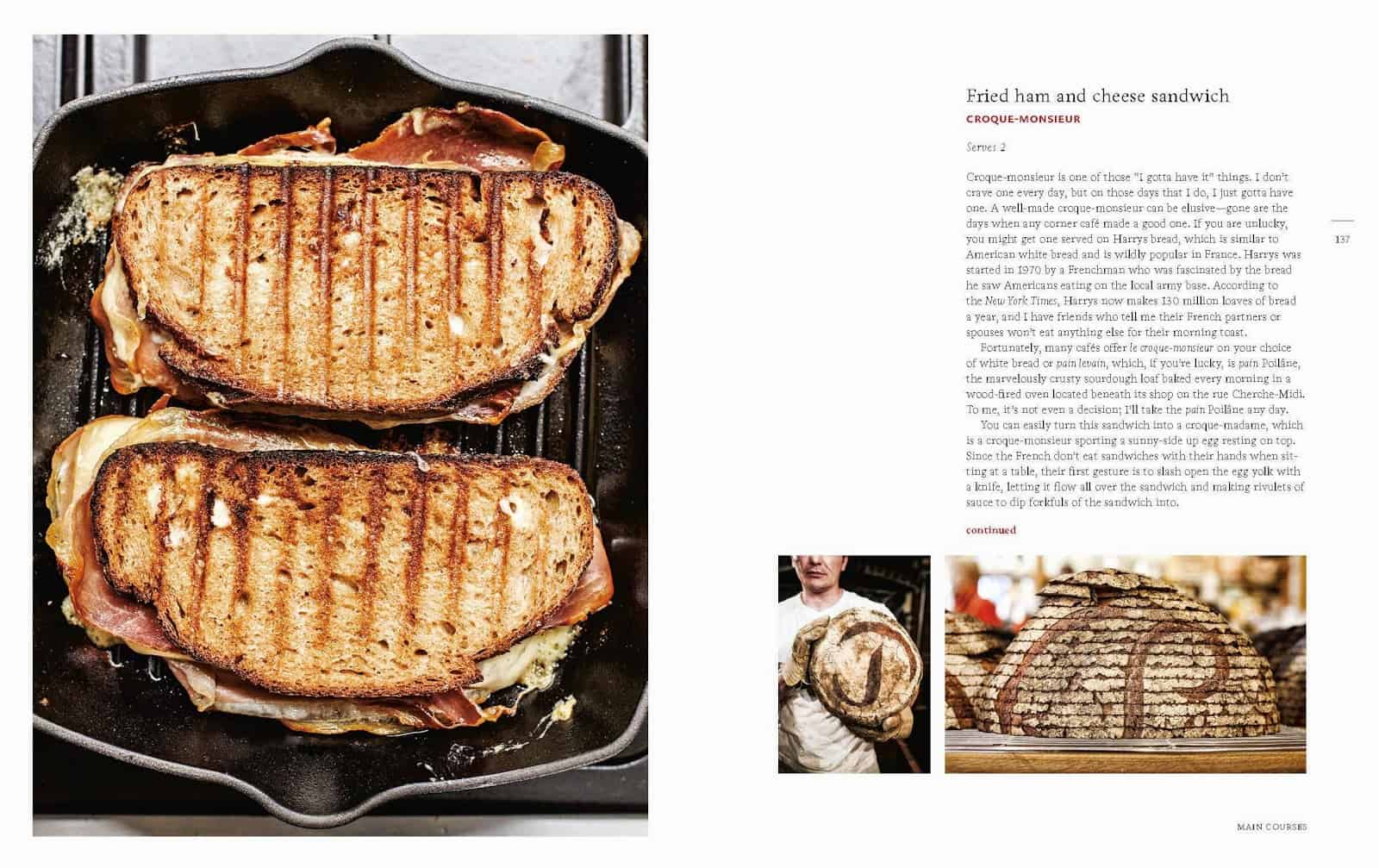 My Paris Kitchen: Recipes and Stories by David Lebovitz arrived on my doorstep yesterday and transported me, virtually, to Paris. As much as I was looking forward to discovering the recipes, Lebovitz’s stories about Paris, the markets, the fast food craze, the olive vendor, the search for the perfect kitchen sink mesmerized me. I couldn’t stop reading, and, funnily enough, began translating what I read into French.
My Paris Kitchen: Recipes and Stories by David Lebovitz arrived on my doorstep yesterday and transported me, virtually, to Paris. As much as I was looking forward to discovering the recipes, Lebovitz’s stories about Paris, the markets, the fast food craze, the olive vendor, the search for the perfect kitchen sink mesmerized me. I couldn’t stop reading, and, funnily enough, began translating what I read into French.
Well, it’s been a while since I dreamed in French, but hadn’t backward translated a book in a much longer time. But the sense that Lebovitz provides of actually experiencing Paris and France through is truly remarkable. The photographs by Ed Anderson are gorgeous and seamlessly flow throughout the book.
If you want every dish photographed, this isn’t the book for you. These aren’t recipes to slavishly follow, but should be created, as Lebovitz notes in his forward, “au pif” or “by the nose.” With that explanation, Lebovitz gained a fan for life, as that’s how I remember learning to cook in France. Watching, chopping, stirring, tasting, throwing in dashes of this or that, but it was the entire process that was important, and was never broken down detail by detail as we tend to do.

Oh, I’m in my own Normandy dream world right now recollecting the baguettes, brioche, and croissants delivered every morning; galvanized tin pails of milk and eggs gathered from the farm next door; cheeses, fish, and vegetables purchased at the market in Dieppe; herbs harvested from the circle garden for ratatouille, mayonnaise; searching out the wicker covered cheese platter from the root cellar (only certain cheeses were refrigerated); the wonder of deboning my first Dover sole, freshly caught that morning; fishing for crevettes to boil for the afternoon meal; conversation, laughter, and joy at the family table. Yes, reading David Lebovitz’s My Paris Kitchen sent me back a bit in time to a wonderful place!
If you’ve never been to Paris or France, but desire to journey there some time, read this book. Even if you’re not interested in cooking, this is a remarkable collection of essays about French culture as it is experienced by a very astute observer.
Love to cook? Well, you will be in seventh heaven with the variety and scope of recipes that Lebovitz shares from his kitchen. As a strong proponent of the farm-to-table movement, it’s not surprising that seasonal produce is celebrated. The apricot crumble tart is calling to me, but I may just need to substitute fresh peaches (as this year, our Hudson Valley apricot crop is not as plentiful due to the harsh winter). But that’s okay as I’m still working “au pif.”
Since it’s a rainy, cool, August day, the French onion soup is quite hard to resist. In fact, the photo and recipe are calling to me. Loudly. This is probably the best recipe I’ve seen to recreate the true French soup that I learned to make by observation only years ago.
Lebovitz’s recipe for Cassoulet almost makes me want to try creating it again this winter. I might. But I don’t think I’ll ever match the taste of the cassoulet my French “mother” would purchase from one Parisian purveyor. The “only” one to buy from, as she would say. It was truly a luxury, as much as the foie gros that we had had the evening before.
It’s funny to think that Parisians needed an American to introduce them to a leafy green, but, yes, David Lebovitz confirms it took Kristen Beddard and her Kale Project to make this trendy green popular in the French markets. I would have sworn that was one of those greens I learned to like during my pre-Kale Project stay in France (sautéed in butter with a dash of fresh lemon juice, salt and pepper).
I know Swiss Chard (la blette) was a green I avoided before living in France and am surprised that Lebovitz doesn’t feature a recipe or two with it. I hadn’t realized what it was when I was served it during a summer midday meal, but found myself asking each day if I could watch the cook prepare this delicious green dish. When she finally agreed and I saw, in fact, that this was the almost-despised chard, I started to giggle. But it was that moment that made me appreciate how small things (sautéing the chopped stem in butter then cooking that with the chopped leafy bit in stock) made something rather boring into something wonderful. Ah, the French way of cooking is really magical simplicity.
Ah, yes, butter. I adore David Lebovitz’s explanation of the debate between using salted or unsalted butter. Read it and understand the nuances of taste and, dream a bit, of the wonderful French farm butters. That’s one thing that we still don’t find here, though we are catching up, finally, with Farmers’ Markets, locally sourced meats and poultry, as well as a much deeper appreciation of how supporting the farm-to-table movement not only benefits farmers and consumers, but the earth itself.
Ironically, the saddest part of the book was reading that the French are moving away from their farm-to-table markets toward the Supermarche and fast food experience. Yes, we now have our slow cooking movement and the French are searching out fast food. Talk about irony. I can’t imagine living in Paris and not shopping in the outdoor markets that feature countryside farmers, purchasing bread at the bakery, going to the favorite butcher for the perfect roast. I think I shopped at a supermarket once while I lived in Paris and never in the countryside. Everything was always purchased form the small purveyors. But it seems that trend has changed over the past ten to fifteen years. I may just keep my memories wrapped up safely and hope when I return that the purveyors, or their children, are still there.

Some other recipes that I can’t wait to try are the Hummus and tapenade, the ham, blue cheese, and pear quiche (this is a flavor profile I want to test out now, not wait for pears to ripen in a few weeks), the fried ham and cheese sandwich (the ubiquitous croque-monsieur that is my personal favorite), a butternut squash crumble in the fall and winter months. Oh so many wonderful recipes to read over, plan to create, and dream about. Sheer heaven.
Lebovitz also dispenses advice that everyone should follow. His essay, “Honesty, My Best Policy,” about his initial interview with Alice Waters is a life lesson for all of us.
What have I taken away from reading My Paris Kitchen? Recipes I’ll treasure. Stories that will let me dream. And a bookish friendship with and admiration for a very talented and astute observer of people and culture. Yes, my dream dinner party is growing and I’d love to sit down with David Lebovitz and his partner someday and just discuss – anything!
Now, what books might I pair with this cookbook. Quite simply any of Laura Florand’s Amour et Chocolat titles and Cara Black’s Aimée Leduc mysteries
In conclusion, I highly, highly recommend My Paris Kitchen: Recipes and Stories by David Lebovitz. This is a book that will be long-treasured, not only for the recipes but for the wonderful stories and sense of place that Lebovitz evokes, effortlessly.

All photos by Ed Anderson from My Paris Kitchen by David Lebovitz, courtesy of Amazon.
From the Publisher
My Paris Kitchen: Recipes and Stories by David Lebovitz
Ten Speed Press (Random House) ⎜ 9781607742678 ⎜ $35.00 ⎜ April 8, 2014
A collection of stories and 100 sweet and savory French-inspired recipes from popular food blogger David Lebovitz, reflecting the way Parisians eat today and featuring lush photography taken around Paris and in David’s Parisian kitchen.
It’s been ten years since David Lebovitz packed up his most treasured cookbooks, a well-worn cast-iron skillet, and his laptop and moved to Paris. In that time, the culinary culture of France has shifted as a new generation of chefs and home cooks—most notably in Paris—incorporates ingredients and techniques from around the world into traditional French dishes.
In My Paris Kitchen, David remasters the classics, introduces lesser-known fare, and presents 100 sweet and savory recipes that reflect the way modern Parisians eat today. You’ll find Soupe à l’oignon, Cassoulet, Coq au vin, and Croque-monsieur, as well as Smoky barbecue-style pork, Lamb shank tagine, Dukkah-roasted cauliflower, Salt cod fritters with tartar sauce, and Wheat berry salad with radicchio, root vegetables, and pomegranate. And of course, there’s dessert: Warm chocolate cake with salted butter caramel sauce, Duck fat cookies, Bay leaf poundcake with orange glaze, French cheesecake…and the list goes on. David also shares stories told with his trademark wit and humor, and lush photography taken on location around Paris and in David’s kitchen reveals the quirks, trials, beauty, and joys of life in the culinary capital of the world.
(I received this book from Blogging for Books and NetGalley for this review.)





